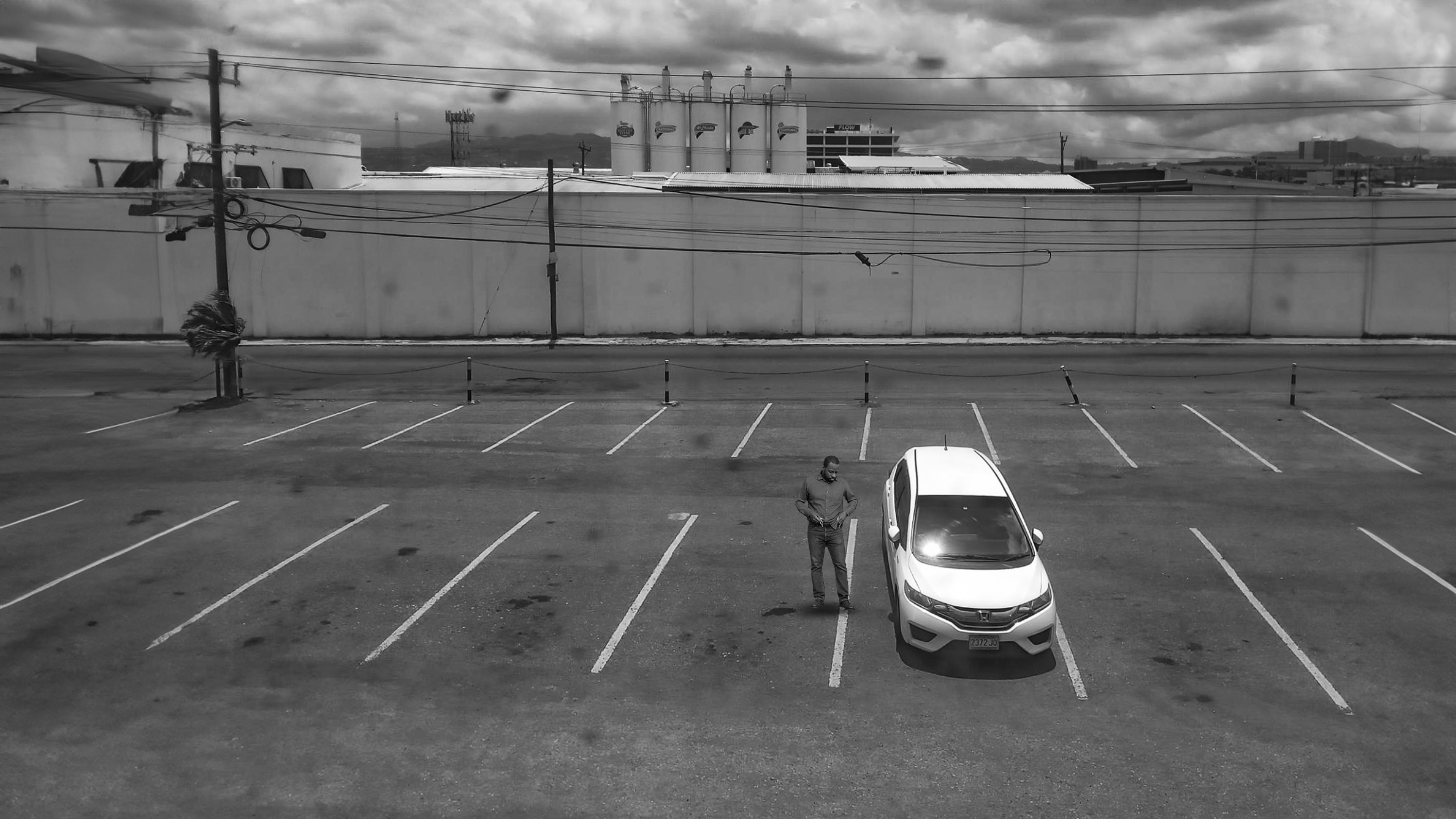
Across the Kingston Metropolitan Area (KMA), parking lots claim the lion’s share of scarce urban land exclusively to store cars when they are not in use. Parking lots, wherever they occur, represent an uneven distribution of urban space. They exist for the exclusive benefit of the small minority of the population that can comfortably afford a car, or for those who struggle through the financial burden of car-ownership rather than face the hostilities of an under-resourced public transportation system. Yet, parking is frequently presented as a public good that everyone participates in and enjoys. All our greatest frustrations living in Kingston Metro stem from the provision of ‘free’ and abundant parking, but we rarely consider the real, material consequences of over-accommodating private car use in land use planning.
Recent discourse, primarily developed by the late economist and urban planner Donald Shoup, is uncovering how parking is at the core of our systemic urban challenges with a wide range of interrelated outcomes, from congestion and environmental degradation to the KMA’s current housing crisis and deepening social divide. These cascading impacts are exacerbated in island contexts where small land masses and restricted urban land mean that we run up against limits much faster. Shoup notes that “The worst thing that many American cities have done, for low-income people, is to create a world in which you need a car.” Indeed, in embracing North American car-dependent development patterns we have reproduced similar socio-economic conditions.
The staggering costs of car ownership in the KMA make it an appropriate proxy for socio-economic status; parking by extension reinforces the social stratification in the city by creating two distinct experiences: Motorists enjoy convenient access to their destinations with wide roads and ample urban space to store their vehicles. Each budget year, the powerful minority of car-owners can expect investments in road expansions, repaving programs and new developments with a generous supply of parking. In contrast, walk-foot people are increasingly pushed to the margins. Human-scale developments where destinations are directly accessed by foot are systematically destroyed to build parking lots and pedestrians risk life and limb each day in a sprawling, hostile urban environment designed at the scale of a car.
Private vehicles require significant amounts of land for storage and trends show they are getting bigger and heavier. We can all feel the city approaching its limits each day, and even though we acknowledge that we simply do not have capacity to store cars for a nation of motorists, the state continues to center car ownership and personal transportation in public policy.
...we may be leaving as much as $JMD 108 billion on the floor each year in unrealized value, claimed by parking in the corporate area alone.
TOO MUCH PARKING:
Approximately 38% of all parceled land in the corporate area is taken up by off-street parking, not including parallel parking or the many parking structures, lawns, and open lots used informally. For comparison, this is the equivalent of 18 National Stadiums or 4 UWI campuses. Parking therefore consumes the largest share of land for the least productive use - car storage.
For urban administrators like the Kingston & St. Andrew Metropolitan Corporation (KSAMC), it is increasingly becoming a major liability. Parking lots produce large swaths of unproductive void spaces that push destinations far from each other and scatter the tax base loosely across the city. To cover the gap, public infrastructure and services like roads, sewage lines or public transportation must run longer supply chains with higher probabilities of failure. In this way, parking creates a systemic economic burden on the city and pressures public finances. The city must pay increasingly higher costs to maintain sprawling infrastructure, but its ability to earn income is crippled by the reduced density of taxable economic activity. Already Kingston has sprawled to an extent that is unsustainable. The spectacle of new, extravagant infrastructure today becomes the crumbling, blighted systems of tomorrow.
Scarce urban land claimed by parking could otherwise be put to productive use. Buildings are the driving engines of cities that provide shelter and generate taxable economic activity. Parks and green spaces are the lungs, supporting countless ecosystem services and mitigating climate impacts. Streets and sidewalks are the bloodline for cities, facilitating movement, trade, and logistics. A city cannot exist without these uses- yet Kingston is actively stifling these vital urban building blocks to oversupply parking. It is a missed opportunity for the KSAMC to earn income to sustain crucial public services. Data from the National Land Agency (NLA) suggest that we may be leaving as much as $JMD 108 billion [1] on the floor each year in unrealized value, claimed by parking in the corporate area alone.
This is a practice Shoup called ‘bundled parking’ which ensures that everyone pays the price for parking, even consumers who do not own a car.
THE HIGH COST OF FREE PARKING:
For households, parking is deepening inflationary pressures. Each time we write a check for the rent or mortgage, shop at a grocery store or buy tickets for a movie, we are indirectly paying for the building and maintenance of off-street parking lots. Dayton Wood, Chairman of the Jamaica Developer’s Association estimates that on average 30% of construction costs[2] is dedicated to parking. Surface parking can cost around JMD 250,000 - JMD 500,000 per space to build, while structured parking costs upwards of JMD 2.5 million per space[3], not including the cost of the land it occupies.
Instead of renting parking spaces so that only the motorists who use them pay (paid parking), Wood notes that property developers provide them for ‘free’ but recoup their immense costs by embedding it in rents they charge their tenants, who in turn pass it unto the public in the cost of goods and services. This is a practice Shoup called ‘bundled parking’ which ensures that everyone pays the price for parking, even consumers who do not own a car. For the majority of the population who are pedestrians, it is a regressive tax, that increases their cost of living by forcing them to subsidize car storage for motorists.
PARKING AND HOUSING WOES:
The problem is particularly acute in housing. The municipality’s requirements to oversupply parking for each new development restrict the supply of new residential units and make those that are built even more expensive.
According to the 2019 Draft Housing Policy Jamaica needs to build 15,000 new housing units annually between 2010 and 2030 to meet housing demand. But, since 2010 we have only managed to supply an average of 2,800 units each year. The availability of land in the KMA is often identified as the crucial barrier to the supply of housing and used to justify further sprawl into fertile agricultural lands[4] on the periphery of the city.
In financialized economies, scarcity in the land market drives up property costs exponentially and limits the number of players who can provide housing. In the KMA, only the state, and a few developers, can take on the risk and access substantial amounts of capital (some, anecdotally, through extra-legal means) to afford the inflated land prices and the prohibitive costs of providing parking. These developers benefit from a comfortable monopoly on housing development by speculating on housing that target international investors or diaspora markets.
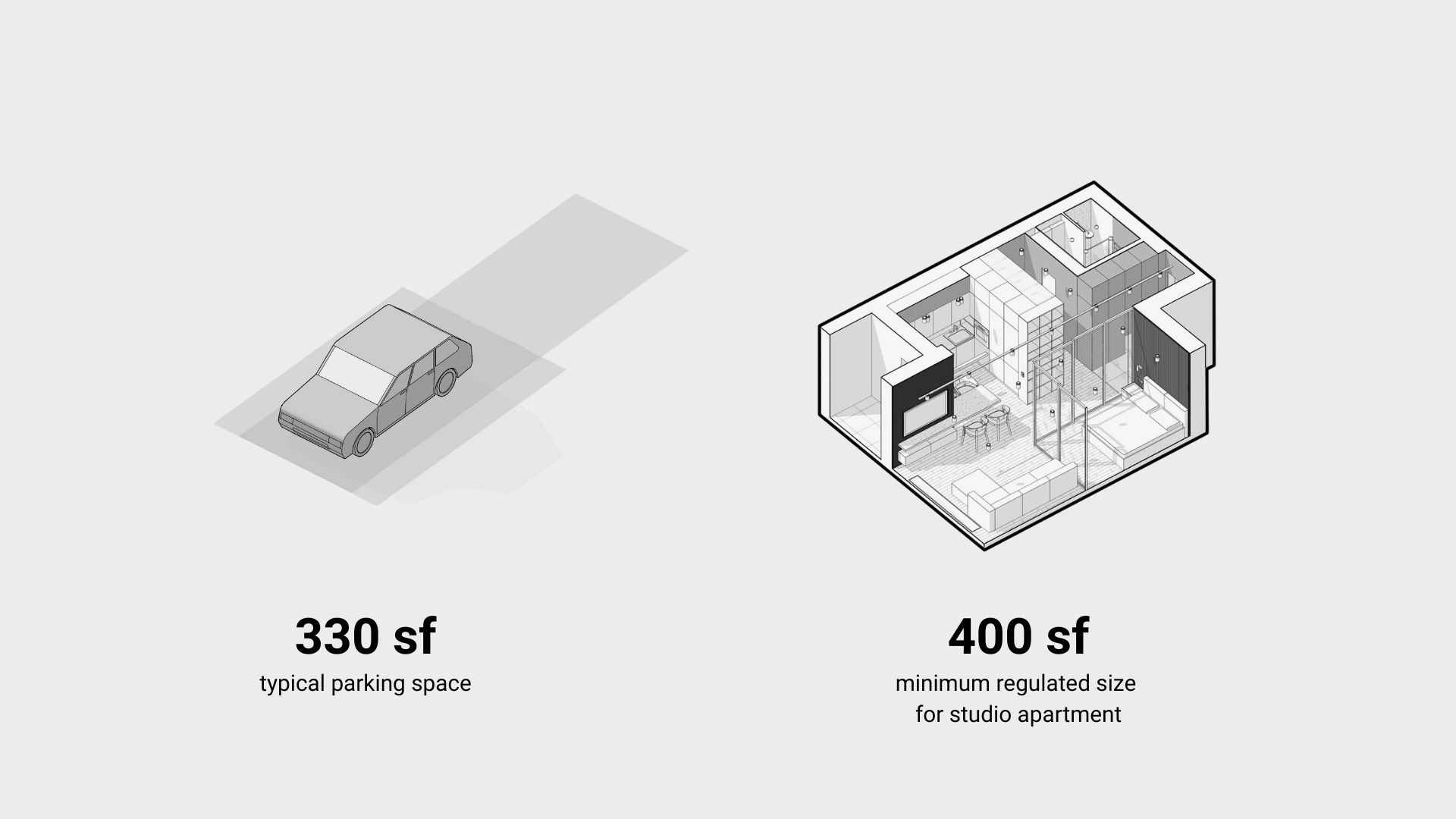
Indeed, the wasteful and inefficient use of land for parking produces scarcity and restricts the supply of housing. Storing cars requires excessive amounts of land, about 330sf per vehicle, just under the minimum required area for studio apartments under KSAMCs regulations, 400 sf. There is a vast land bank lying dormant under parking lots in the KMA, if made productive, could comfortably meet the 2030 housing demand for the entire island in Kingston’s corporate area alone[5].
Our success at supplying free parking is a fundamental part of the fact that we are failing dramatically at meeting housing demand. Recent regulations by the National Planning Agency (NEPA) and KSAMC have made housing more expensive by forcing the construction of structured or underground parking (Development Orders of 2017).
In an interview with Architect and Developer Clifton Yap, he notes how parking rendered the recent NHT development, Ruthven Towers, unaffordable.
While the specific economic impacts on the Caribbean remain unexplored, recent studies from North America suggest that parking can increase housing costs by as much as 25%. Wood suggests that without parking regulations, developers would likely supply more housing units at better prices. (Disclaimer: Developers famously pocket their savings but pass on their expenses).
Compact walkable districts like Downtown Kingston stay dormant because of the immense land and development costs required to meet the parking requirements...
PARKING IS STRUCTURALLY ADMINISTERED:
"In the immediate post-World War II period, with the removal of petrol rationing and other war-time restrictions, there was a rapid increase in automobile transport in Kingston, and a consequent impetus for suburbanization in the Liguanea plain, north of the city center[6]" (Swaby, 1974). Downtown Kingston would continue to manage demand with metered on-street parking, but as the sprawling suburbs of St. Andrew emerged as the center of activity, motorists pressed for abundant, free, and convenient parking to store their cars. Under the influence of North American car-focused planning discourse, the state eagerly accommodated with policies and guidelines that aimed to increase the provision of off-street parking on parceled land. In 2023, these measures were officially codified into law through the Parking and Loading Requirements in the Development Orders for Kingston & St. Andrew and the Pedro Cays.
The Parking and Loading Requirements mandate property developers to provide a minimum number of free parking spots for new builds, but according to Shoup, the way they are determined is pseudo-science. He emphasizes that “urban planners don’t have any training in how to set these requirements, and there is no way to say how much parking each building needs.”
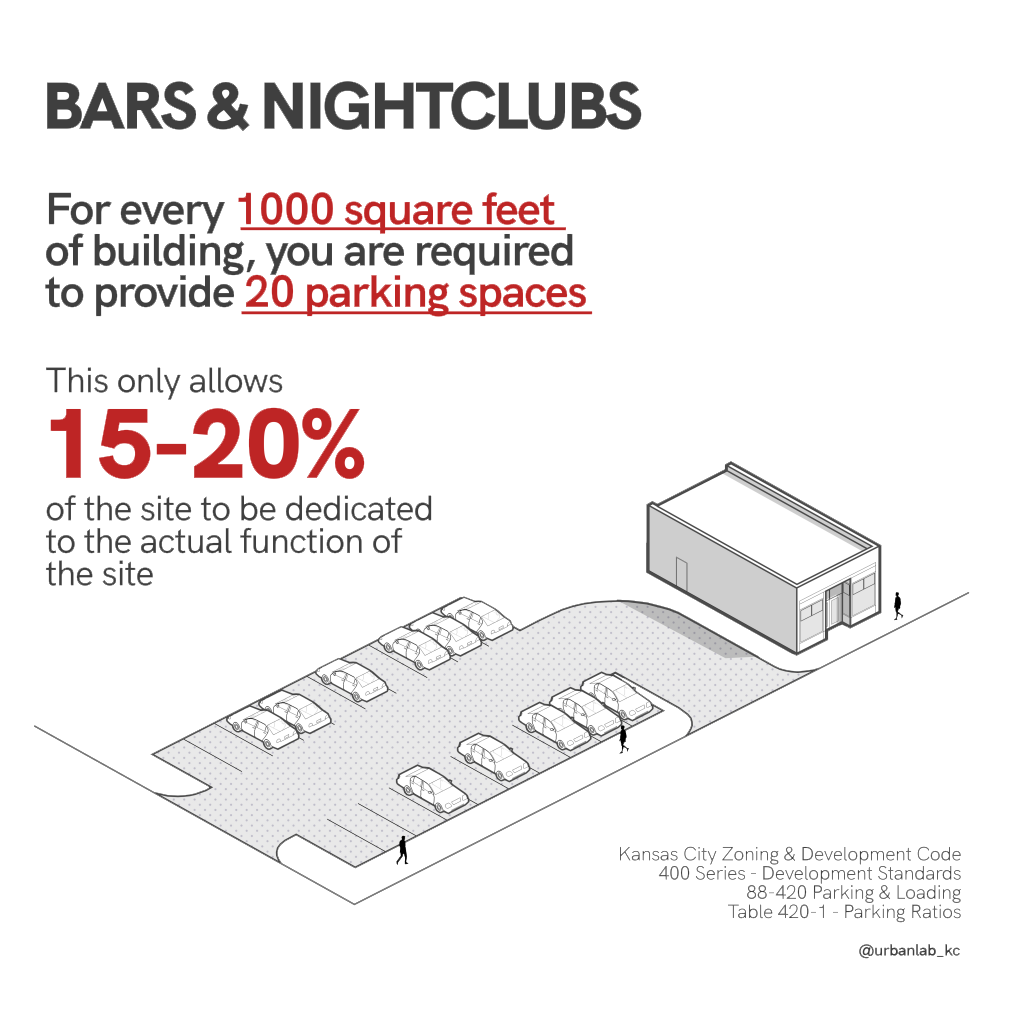
The amount required usually correlates to a specific characteristic of the development. Residential parking is tied to the number of units (1.25 space per unit), but commercial parking is tied to floor area (1 space per 20 sq.m). These requirements get increasingly arbitrary; a golf course requires 4 spaces per hole, and a tennis court requires 4 spaces per court. Sometimes parking minimums are based on highly variable metrics that developers cannot anticipate, like the number of employees in a business. Curiously, bars and clubs require the highest number of parking spaces (1 space per 2 sq.m), with the negative consequence of encouraging drunk driving. Despite its size, the parking regulations in the KMA often exceeds the requirements in larger North American car-dependent cities.
The National Works Agency (NWA) determined these requirements over a decade ago using the Parking Generation Manual developed by the Institute of Transportation Engineers (ITE). Shoup offers a detailed critique of this methodology, but notable the ITE itself has recently recognized its limitations and now argues for getting rid of Parking Requirements altogether.
The Parking and Loading Requirements make off-street parking a strict condition for development. According to Norman Biggs[7], Deputy Planning Director at the National Works Agency, applications below the requirements are rarely approved for development. Consequently, financial institutions and investors are unlikely to provide capital for developments with reduced parking or otherwise risk a protracted process with no guarantee of success. Even minor changes are discouraged. Yap recounts his fight with NWA to create human-scale development along Lady Musgrave Road by moving parking to the back of the site.
Even transit hubs where most people walk are forced to abide by these regulations. Compact walkable districts like Downtown Kingston stay dormant because of the immense land and development costs required to meet the parking requirements or otherwise are destroyed to perpetuate sprawling car-focused development patterns. The sustainable urban development of the Kingston Metropolitan Area is suppressed under the regime of Parking & Loading requirements.
...we don't often notice how our social lives are organized by cars or take place in hot, featureless parking lots
BUT WHERE WILL I PARK?
Decades of car-dependent development have shifted our relationship with the city to the extent that we don't often notice how our social lives are organized by cars or take place in hot, featureless parking lots (from drink-ups to corporate events). Driving as a solitary activity reduces opportunities for human interaction and reinforces social isolation, and parking by extension generates sprawling development patterns that further alienate us from each other. For many motorists, parking is more than a practical convenience, it forms part of a contiguous system of private space that limits their interaction with the ‘public’. From this perspective, even sympathetic motorists will still expect abundant, convenient parking despite the many logical contradictions and the detrimental social consequences that emerge from the provision of ‘free’ parking.
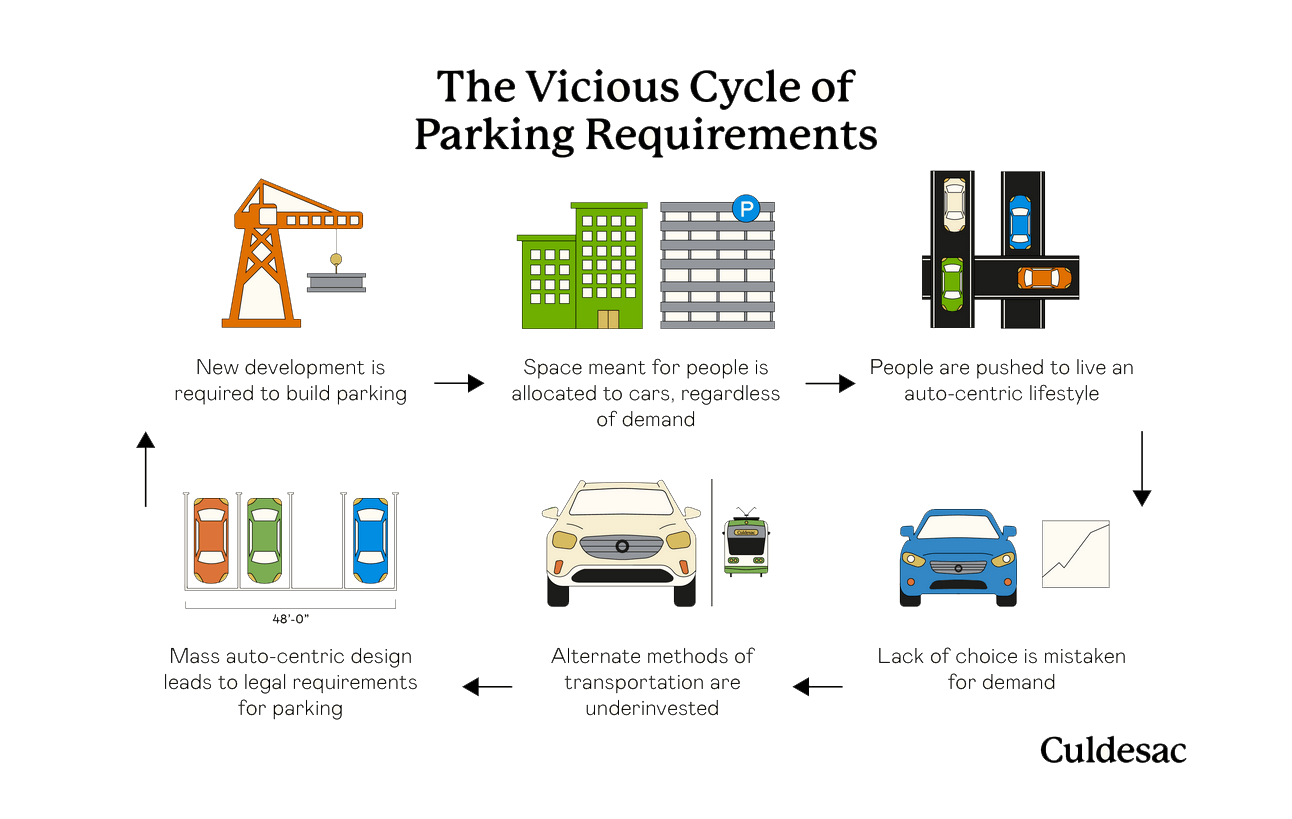
Donald Shoup observes how “parking is a fertility drug for cars” meaning the more parking provided for drivers, the more our city sprawls, the further destinations are from each other, and the more likely you are to need a car for each trip. Clifton Yap illustrates the dilemma:
The state, for its part, invests extravagantly in the expansion of car infrastructure and pulls people towards car ownership through a series of motor vehicle liberalization policies and increasingly forgiving auto financing regimes. Our lack of choice is consistently mistaken for demand.
...cities across the world are coming to terms with the fact that adopting North American car-centric development patterns have fundamentally inhibited social development.
REFORMING PARKING:
The obscene cost of sprawl is dramatically impoverishing the municipality and systems are slowly collapsing as we struggle to keep up with maintenance. Simultaneously, households are slipping through the cracks as living costs approach crisis levels with inflation in urban Jamaica up 38% since 2020[8]. Parking Reform is a global transformation currently underway, as cities across the world are coming to terms with the fact that adopting North American car-centric development patterns have fundamentally inhibited social development. In the KMA there are four parking reforms, that are crucial to repairing decades of car-dependent planning in the municipality:
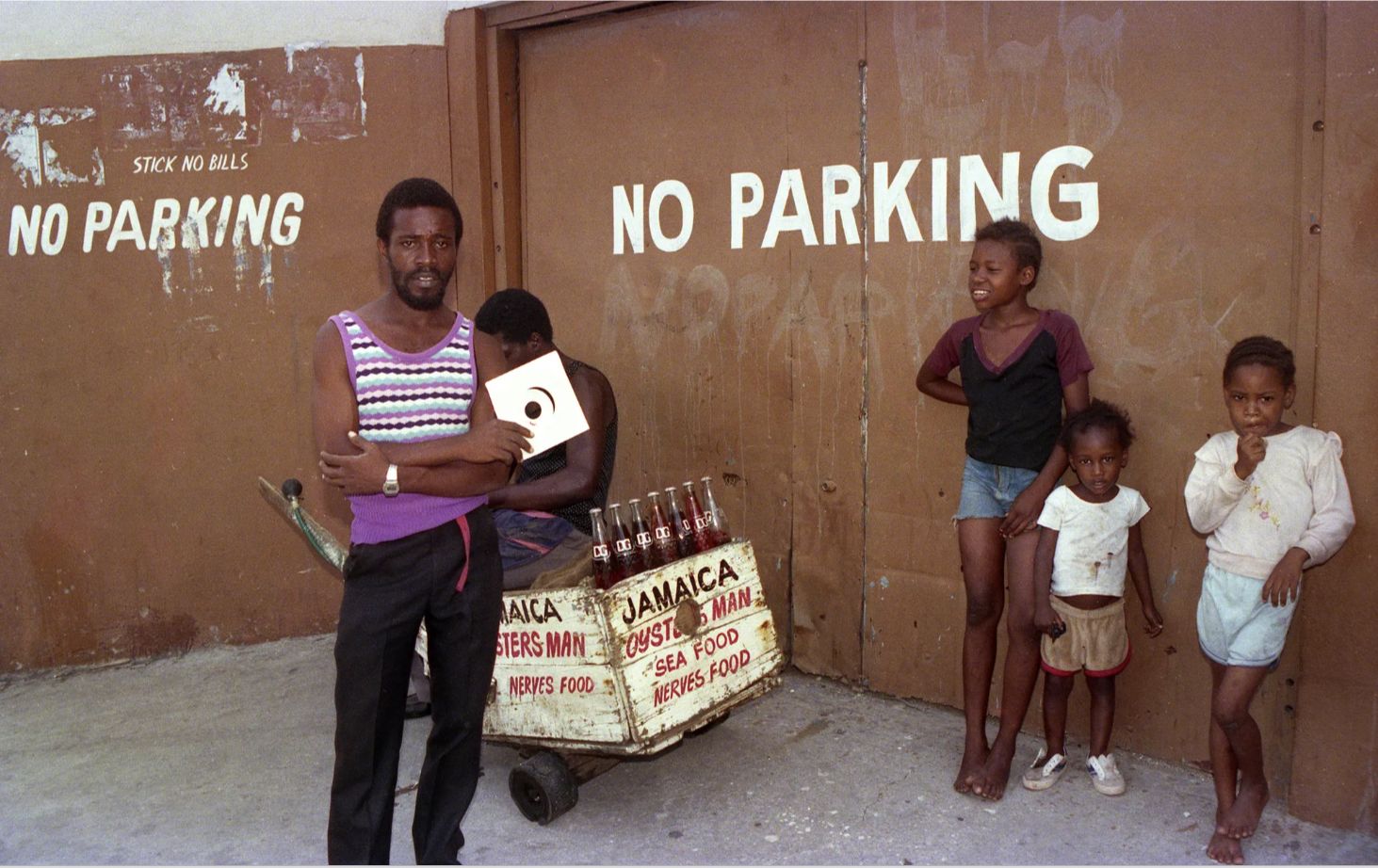
The Parking Reform Network has identified over 3,000 cities across North America that have taken steps to reduce parking requirements or eliminate them entirely. The results of parking reform have been gradual rather than dramatic, however the KMA can no longer afford to accommodate private car use and parking at the current extent.